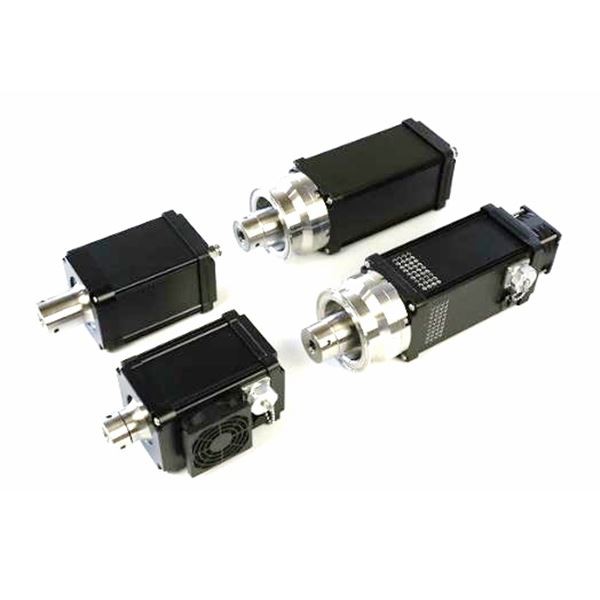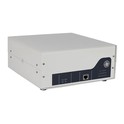Hey there! As an ultrasonic transducer supplier, I often get asked if an ultrasonic transducer can be used for ultrasonic coating. Well, the short answer is yes, and in this blog, I'll dive deep into how and why ultrasonic transducers are a game - changer in the ultrasonic coating world.
First off, let's understand what an ultrasonic transducer is. An Ultrasonic Transducer is a device that converts electrical energy into ultrasonic waves. These waves operate at frequencies higher than the upper audible limit of human hearing, typically above 20 kHz. Ultrasonic transducers come in various shapes and sizes, and they're used in a wide range of applications, from medical imaging to industrial cleaning.
Now, onto ultrasonic coating. Ultrasonic coating is a process where a thin, uniform layer of a liquid coating material is applied to a substrate using ultrasonic energy. This technique has gained popularity in recent years due to its ability to create high - quality, precise coatings with minimal waste.
So, how does an ultrasonic transducer fit into the ultrasonic coating process? Well, the transducer is the heart of the system. It generates the ultrasonic waves that are used to atomize the coating liquid. When the liquid passes through the ultrasonic field created by the transducer, it breaks up into tiny droplets. These droplets are then evenly distributed onto the substrate, forming a smooth and uniform coating.
One of the key advantages of using an ultrasonic transducer for ultrasonic coating is the precision it offers. Unlike traditional coating methods, which can sometimes result in uneven coatings or overspray, ultrasonic coating using a transducer allows for highly accurate control of the coating thickness and coverage. This is especially important in industries where precision is crucial, such as electronics manufacturing or medical device production.
Another benefit is the efficiency. Ultrasonic transducers can atomize the coating liquid more effectively than other methods, which means less material is wasted. This not only saves costs but also reduces the environmental impact of the coating process. Additionally, because the droplets are so small and evenly distributed, the coating dries faster, which can speed up the overall production process.
Let's talk about the different types of ultrasonic transducers that can be used for ultrasonic coating. There are piezoelectric transducers, which are the most commonly used type. These transducers work based on the piezoelectric effect, where an electric field applied to a piezoelectric material causes it to vibrate and generate ultrasonic waves. Piezoelectric transducers are known for their high efficiency and reliability, making them a popular choice for ultrasonic coating applications.
There are also magnetostrictive transducers. These transducers use a magnetostrictive material that changes its shape in response to a magnetic field. When a magnetic field is applied to the material, it vibrates and produces ultrasonic waves. Magnetostrictive transducers are often used in applications where high power is required, such as large - scale industrial coating processes.
When choosing an ultrasonic transducer for ultrasonic coating, there are a few factors to consider. The frequency of the transducer is an important one. Different frequencies are suitable for different coating materials and applications. For example, lower frequencies are better for thicker coatings, while higher frequencies are more suitable for thinner, more precise coatings.
The power output of the transducer is also crucial. You need to make sure that the transducer has enough power to atomize the coating liquid effectively. However, too much power can also cause problems, such as over - atomization or damage to the coating material. So, it's important to find the right balance.
The durability of the transducer is another consideration. Coating processes can be harsh environments, with exposure to chemicals and high - speed particles. You want a transducer that can withstand these conditions and continue to perform reliably over time.
In real - world applications, ultrasonic transducers have been used to coat a wide variety of substrates. For example, in the automotive industry, they're used to coat car parts with protective coatings to prevent corrosion. In the food industry, ultrasonic transducers are used to apply edible coatings to fruits and vegetables to extend their shelf life.
In the aerospace industry, ultrasonic coating using transducers is used to apply thermal barrier coatings to aircraft engine components. These coatings help to protect the components from high temperatures and improve their performance.
Now, I know what you're thinking. "This all sounds great, but how do I get started with using an ultrasonic transducer for ultrasonic coating?" Well, that's where we come in. As an ultrasonic transducer supplier, we have a wide range of high - quality transducers that are suitable for ultrasonic coating applications.
We can help you choose the right transducer for your specific needs, whether you're a small - scale manufacturer or a large industrial operation. Our team of experts can provide you with technical support and guidance to ensure that you get the most out of your ultrasonic coating system.
If you're interested in learning more about our ultrasonic transducers or want to discuss your coating application, don't hesitate to reach out. We're here to help you take your coating process to the next level with the power of ultrasonic technology. Whether you have questions about frequency, power, or durability, we've got the answers.
In conclusion, an ultrasonic transducer is an excellent choice for ultrasonic coating. It offers precision, efficiency, and a range of other benefits that make it a superior option compared to traditional coating methods. If you're in the market for a reliable and high - performance ultrasonic transducer for your coating process, look no further. Contact us today, and let's start a conversation about how we can work together to achieve your coating goals.
References

- Smith, J. (2018). Ultrasonic Technology in Industrial Coating Processes. Journal of Industrial Engineering.
- Johnson, A. (2019). The Advantages of Ultrasonic Coating in Electronics Manufacturing. Electronics Today Magazine.
- Brown, C. (2020). Environmental Impact of Coating Technologies: A Comparison. Environmental Science Review.





